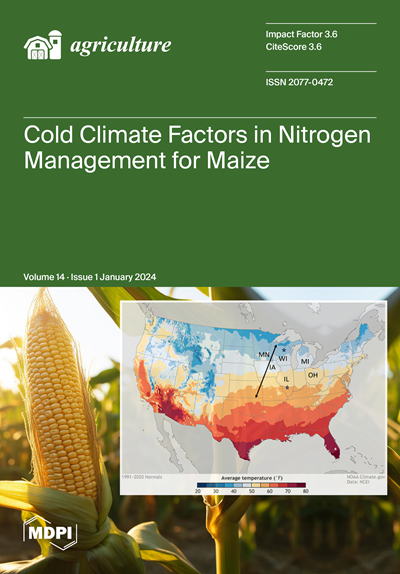白芒果鳞片生物学、生态学、分布与管理研究进展
IF 3.6
2区 农林科学
Q1 AGRONOMY
引用次数: 0
摘要
芒果白鳞虫(Aulacaspis tubercularis)是一种多食性、多毒性害虫,严重威胁芒果的质量生产和出口。WMS昆虫从叶子、树枝和果实中吸取汁液。这种害虫的严重侵袭可能导致嫩叶掉落,小枝干枯,开花不良,最后在果实表面产生粉红色斑点,从而降低果实的质量。本文旨在全面介绍世界各地害虫的生物学、生态学和防治情况。WMS最早于1929年在印度芒果上的福尔摩沙岛被报道,后来在加勒比群岛、印度和巴西也有报道。现在,它在世界上近69个芒果生产国被发现。热状态可能影响害虫的数量。在澳大利亚,夏季的生命周期为35-40天,冬季为70-85天。植物的品种、树龄、每英亩树数、树冠大小和阳光穿透度影响WMS的密度。不同瓢虫科甲虫和拟寄生物粉蛾以WMS为食;然而,农民通常使用杀虫剂来消灭这种害虫。在巴基斯坦,WMS对芒果出口的威胁越来越大;因此,需要IPM计划来减少害虫数量并提高芒果的质量。本文章由计算机程序翻译,如有差异,请以英文原文为准。
A Review on White Mango Scale Biology, Ecology, Distribution and Management
The white mango scale (WMS) insect, Aulacaspis tubercularis (Hemiptera: Diaspididae), is a polyphagous, multivoltine pest which is a serious threat to qualitative mango production and export. The WMS insect sucks sap from leaves, branches and fruits. The heavy infestation of this pest may cause the falling of young leaves, drying up of twigs, poor flowering, and, finally, reduce the quality of fruits by producing pink spots on fruits’ surface. This review paper was written to provide comprehensive information about pest biology, ecology and management in different parts of the world. WMS was first reported on the island of Formosa on Mangifera indica in 1929 and later on in the Caribbean Islands, India and Brazil. Now it is found in almost 69 mango-producing countries of the world. The thermal regime may affect the population of pests. In Australia, the life cycle is completed in 35–40 days in summer and 70–85 days in winter. Variety, age of plants, number of trees per acre, canopy size and sunlight penetration affect the density of WMS. Different Coccinellid beetles and parasitoid Encarsia femorosa feed on WMS; however, farmers most commonly use insecticides to get rid of this pest. In Pakistan, WMS is a growing threat to the export of mangoes; hence IPM plan is needed to reduce the pest numbers and enhance qualitative mango production.
求助全文
通过发布文献求助,成功后即可免费获取论文全文。
去求助
来源期刊

Agriculture-Basel
Agricultural and Biological Sciences-Food Science
CiteScore
4.90
自引率
13.90%
发文量
1793
审稿时长
11 weeks
期刊介绍:
Agriculture (ISSN 2077-0472) is an international and cross-disciplinary scholarly and scientific open access journal on the science of cultivating the soil, growing, harvesting crops, and raising livestock. We will aim to look at production, processing, marketing and use of foods, fibers, plants and animals. The journal Agriculturewill publish reviews, regular research papers, communications and short notes, and there is no restriction on the length of the papers. Our aim is to encourage scientists to publish their experimental and theoretical research in as much detail as possible. Full experimental and/or methodical details must be provided for research articles.
 求助内容:
求助内容: 应助结果提醒方式:
应助结果提醒方式:


